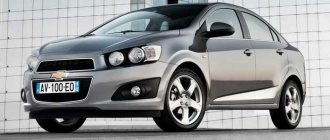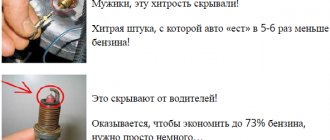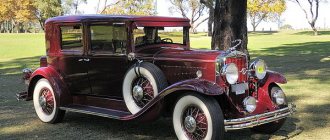An excursion into the history of Aveo
Chevrolet Aveo has gone through an amazing history of creation and development. The car was invented in the USA, where it appeared on the roads in 2003, becoming a replacement for the obsolete Chevrolet Metro. Only 2 years later the car entered the European market, as well as in Oceania and Africa. The car is being produced by the American auto giant General Motors based on a project by Giorgetto Giugiaro, who at that time headed the famous Italian car studio ItalDesign.
The peak of popularity of the B-segment occurred in the 90s of the last century. The leader among subcompact hatchbacks in those years was the Chevrolet Metro, but by the mid-00s its design and technical side had actually become obsolete. General Motors did not plan to leave the market, so a new stylish car was developed, in the commercial success of which few at first believed. Time has shown that this is one of the most successful cars in the entire history of the automaker.
Aveo is not always seen on the roads under its usual name. Producing cars under various brands is the signature style of General Motors. It is difficult to find a car from a company that is produced in all countries under the same name. All over the world you could find twins of the car under a variety of brands.
| A country | Name |
| Canada | Suzuki Swift, Pontiac Wave |
| Australia/New Zealand | Holden Barina |
| China | Chevrolet Lova |
| Ukraine | ZAZ Vida |
| Uzbekistan | Daewoo Kalos, Ravon R3 Nexia |
| Central, South America (partially) | Chevrolet Sonic |
It is worth noting that the Chevrolet Aveo is known not only as a sedan.
Initially, the car was conceived as a hatchback with five and three doors. However, buyers appreciated the sedan above other versions, so the second generation received an emphasis on this body type. The five-door hatchback continues to be produced, although its sales are several times lower. The three-door Aveo has been completely discontinued since 2012. The first generation Aveo T200 lasted quite a long time: from 2003 to 2008. In 2006-2007, a restyling was carried out (version T250), support for which continued until 2012. At the turn of 2011 and 2012, the market saw the second generation of the T300, which continues to be produced worldwide.
Body
The car was produced in three body styles: 3- and 5-door hatchback and sedan. The latter was modernized in 2006, the hatchback only two years later. The developers failed to hide the outdated design. Proof of this was the results of crash tests according to Euro NCAP. The sedan was tested after restyling. The car earned only two stars, which were reduced to one after stricter requirements.
Read more: Do-it-yourself replacement of spark plugs
As a consolation, we can say that the Aveo is adequately protected from corrosion. True, the paint peels off on many specimens, but this does not contribute to the emergence of pockets of corrosion. The exception is the rear trunk door of a hatchback: brown spots appear around the lock and the strip above the number.
Aveo engines
Aveo power units have no less interesting history than the car itself. The first and restyled generations of hatchbacks and sedans each received 4 types of installations, the second generation – 3 internal combustion engines.
The engines worked both manually and automatically, which always distributed torque to the front axle of the wheels. In this case, exclusively gasoline was used as fuel. You can see them in the table below.
| Power | Torque | Max. speed | Compression ratio | Average consumption per 100 km | |
| I generation | |||||
| SOHC E-TEC | 72 hp | 104 Nm | 157 km/h | 9.3 | 6.6 l |
| 1.2 MT | |||||
| SOHC | 83 hp | 123 Nm | 170 km/h | 9.5 | 7.9 l |
| E-TEC | |||||
| 1.4 MT | |||||
| DOHC S-TEC 1.4 MT/AT | 94 hp | 130 Nm | 176 km/h | 9.5 | 7.4 l/8.1 l |
| DOHC S-TEC 1.6 MT/AT | 106 hp | 145 Nm | 185 km/h | 9.7 | 10.1 l/11.2 l |
| I generation (restyling) | |||||
| DOHC S-TEC 1.2 MT | 84 hp | 114 Nm | 170 km/h | 10.5 | 5.5 l |
| DOHC ECOTECH | 101 hp | 131 Nm | 175 km/h | 10.5 | 5.9 l/6.4 l |
| 1.4 MT/AT | |||||
| DOHC | 86 hp | 130 Nm | 176 km/h | 9.5 | 7 l/7.3 l |
| E-TEC II | |||||
| 1.5 MT/AT | |||||
| DOHC E-TEC II | 109 hp | 150 Nm | 185 km/h | 9.5 | 6.7 l/7.2 l |
| 1.6 MT/AT | |||||
| II generation | |||||
| SOHC ECOTECH | 86 hp | 115 Nm | 171 km/h | 10.5 | 5.5 l |
| 1.2 MT | |||||
| SOHC | 100 hp | 130 Nm | 177 km/h | 10.5 | 5.9 l/6.8 l |
| E-TEC II | |||||
| 1.4 MT/AT | |||||
| DOHC ECOTECH | 115 hp | 155 Nm | 189 km/h | 10.8 | 6.6 l/7.1 l |
| 1.6 MT/AT |
GM cars are always characterized by specific engines: for each region, the manufacturer develops unique power plants taking into account the specifics of the region. They often overlap: for example, the Ukrainian and Asian markets received identical lines, the European and Russian segments received 2 similar units.
Engines of the 1st generation
Happy owners of the first generation Aveo preferred to purchase cars with 1.4-liter engines. The advantage of these engines is that they offered relatively low fuel consumption with excellent power: with 94 “horses,” the car consumed an average of 9.1 liters in the city and 6 liters on the highway. Another advantage of the 1.4-liter unit was the opportunity to buy a version with an automatic transmission: automatic transmission was just appearing in Russia in the mid-00s, so buyers were happy to try the new automotive technology.
The 1.2-liter version was popular as the most budget-friendly solution. Economical consumption and the lowest cost in the model range at first attracted buyers, but later the choice of drivers fell on other engines. The 1.6-liter unit became slightly less popular than the 94-horsepower internal combustion engine, since it consumed noticeably more fuel, although it provided an increase in power of 12 “horses”.
Only the 83-horsepower 1.4-liter version failed, which turned out to be closer in parameters to the 1.2 MT at a higher price. It was released as an interim temporary package to demonstrate the car's capabilities. Naturally, the manufacturer did not count on widespread demand, so it was soon forced to replace it with a more advanced power unit.
Restyled engines
The restyled line initially updated only the appearance of the cars, retaining all previous engine versions. After 2008, the technical side was also redesigned. The general structure of the aggregates remained the same, but the substantive differences turned out to be more than significant.
The first noticeable difference between a number of engines was a significant increase in service life, which manifested itself in an increase in power and torque. In addition, fuel consumption has decreased by an average of 2 liters per 100 km. For the same reasons as in the previous generation, 1.4-liter units have gained the most popularity.
The manufacturer has placed serious emphasis on processing the 1.2 MT engine. The power of the unit increased to 84 horsepower, the maximum speed to 170 km/h, while gasoline consumption decreased by an average of 1.1 liters. Such changes did not affect the price of the car, due to which the popularity of the economical version of the internal combustion engine has increased sharply.
The disappointment of the restyled generation of engines was the transitional 1.5-liter unit. The power plant turned out to be quite weak, since 86 horsepower and 130 Nm of torque compared to the same 1.4-liter variation showed an order of magnitude lower performance. In addition, fuel consumption on average per 100 km was 8.6 liters in the city and 6.1 liters on the highway, which is prohibitively high even in comparison with 1.2 Mt.
Generation II engines
The current generation of Chevrolet Aveo has received a completely redesigned line of power units. The main distinguishing feature was the transition to a new level of environmental class: we are, naturally, talking about Euro 5. In this regard, the American automaker started talking about introducing some versions of diesel units, but it did not come to the point of putting such ideas into practice.
The weakest of all the variations was the 1.2-liter engine with 86 “horses,” which, according to tradition, was accompanied exclusively by mechanics. The installation turned out to be quite economical, since it spent an average of 7.1 liters in the city and 4.6 liters on the highway. It is worth noting that all 2nd generation cars received a detailed redesign of the transmission system, but a significant improvement in the quality of its operation became noticeable precisely in combination with the 1.2 MT engine.
A 1.4-liter internal combustion engine was also offered as a transitional model. With a power of 100 horsepower and a torque of 130 Nm, the unit demonstrated excellent performance in all conditions. A serious drawback was the engine's gasoline consumption: for 9 liters in the city and 5.4 liters on the highway, the above parameters seemed disproportionately weak.
The most practical and, as a result, popular option was the 1.6-liter engine. The power plant is used in all trim levels, the production of which is carried out in Russia. The power of the unit is 115 horsepower with 155 Nm of torque. The engine has become more environmentally friendly, resulting in a reduction in carbon dioxide emissions to 167 g/km. Consumption on the highway decreased to 5.5 liters, in the city - to 9.9 liters, thanks to which buyers were able to get more power at lower costs.
Engine Chevrolet Aveo T250 1.2 liters
The base unit belongs to the Daewoo S-TEC II family and is distinguished by a 16-valve head, a variable intake geometry system and a timing chain drive. Hydraulic compensators are not provided here, so the thermal clearances of the valves must be periodically adjusted.
This power unit rarely bothers its owners and its main problems are related to attachments. The timing chain resource is not very high and is about 150,000 km. However, replacement is relatively inexpensive and can be done at any specialized car service center.
Rarely, in a number of markets there are modifications equipped with the old B12S1 unit.
Find Aveo engine service manuals on the AveoClub forum
| 1.2 l B12D1 manual gearbox5 | |
| Type | injector |
| Fuel | gasoline AI-92 |
| Location | transverse |
| Cylinders | 4 in a row |
| valves | 16 |
| Working volume | 1206 cm³ |
| Power | 84 hp |
| Torque | 114 Nm |
| Acceleration to 100 km/h | 13.0 s |
| Speed (max) | 172 km/h |
| Ecological Class | Euro 4 |
| Consumption city | 7.2 l |
| Flow track | 4.6 l |
| Mixed flow | 5.5 l |
Right choice
Over the 13 years of its presence on the European and Russian markets, Chevrolet Aveo has offered several generations and vehicle configurations. Practice has shown that the domestic buyer is very selective when it comes to power plants. The question of choosing the right unit depends on the driver’s expectations in terms of both performance and cost of the car.
It is best to buy a used Aveo of the first generation with a 1.4-liter engine. The unit is not subject to serious wear, unlike the 1.6 MT and AT versions, which show themselves to be less reliable over a long period of time. Despite all the shortcomings of the 1.2-liter engine, in a used car it will hardly perform noticeably worse than a new one. At the same time, the cost of the car will be very pleasant. These power plants are inexpensive to maintain, although due to the gradual disappearance of outdated components from the market, finding the necessary parts is becoming more difficult every year.
With restyled versions the picture is more rosy. You can purchase both 1.4 and 1.6 liter versions, while the latter should be considered from 2010 to avoid problems with increased wear. It is not recommended to purchase a “one and a half” engine, since even in new cars it has not shown itself to be very stable. Owners give excellent recommendations to the 1.2-liter engine. Improved engine architecture and excellent interaction with the transmission system are an excellent reason to take a closer look at the economical unit.
The purchase of second-generation used cars depends in most cases only on the care of the previous owner and his compliance with the requirements for technical inspection and operation. Of course, there is no need to buy a 1.2 MT if there are 1.4 and 1.6 liter versions. If you have enough money, it is best to take a closer look at the last of the proposed variations.
The new 2020 Aveos only come with 1.6-liter engines. Regardless of the functional configuration (LT or LTZ), the power units are identical, so for the buyer the question will be to choose between a manual and an automatic. In this case, the question, as a rule, is not posed from the perspective of fuel consumption: the decision depends only on habit and ease of use.
Description of Chevrolet Aveo
Chevrolet Aveo is a compact city car produced since 2002, developed by the South Korean branch of General Motors, on the GM Gamma platform, on which the Opel Mokka, Chevrolet Cobalt, etc. were created. On the world market, the car replaced the aging Daewoo Lanos / Chevrolet Lanos and is sold at under different brands and models, initially called Daewoo Kalos, later it was renamed and Aveo was produced for different countries under different brands and models: Holden Barina for Australia, Daewoo Gentra for Korea, Pontiac G3 in the USA, Suzui Swift+ in Canada, etc.
The second generation, which entered the market in 2011, is called the Chevrolet Aveo for almost the entire world, with rare exceptions. Such interlacing is normal practice for such a large concern as General Motors. Naturally, the situation with engines is no simpler; engines on the Chevrolet Aveo were installed in a variety of different ways and were constantly refined during the production process, each has its own index, parts can be either interchangeable or not.
Wikimotors will help you understand all the fuss described above, tell you what engines were installed on the Aveo, their structure and circuits, what kind of oil to pour into the engine, its service life, what malfunctions occur, their causes and repairs. As well as the correct tuning of your Chevrolet Aveo without loss of engine life.
Auto repair school – DIY car repair
Best answers
Answers 5)
Shown. Total: 5. Julia June 25, 2020 10:45 #
Good afternoon
We are going to drive a Chevrolet Aveo, 1.6, 2013, mileage 78 thousand. Everything is normal, but the question is: is the compression in the engine normal at 11 atmospheres???
I look forward to your answer and advice. Thank you in advance!
2 Ivan June 25, 2020 10:35 pm # Compression 11 is not a bad indicator. Not ideal, but nothing to worry about yet. 1 Dmitro June 21, 2020 21:41 #
AndreySens , the cylinder head gasket looks ordinary, well, as far as it can be seen. One mechanic looked at it, took some measurements of the cylinder head and said that the height was normal. Something like this. The previous owner claims that he did nothing to the engine.
The injectors were washed just in case. But this procedure did not change the weather.
In general, the puzzle works out. You’ll have to really use the Aveo until the reason “comes out on its own” (((
4 Dmitro June 18, 2017 11:13 #
Oh, I'm pleasantly surprised. I thought my question would remain unanswered. Thanks again.
There are no problems with oil, as I said. The level on the dipstick is stable. It is difficult to say anything by grinding the cylinder head. But what will happen if you continue to drive with such compression?
And I also found on the Internet that the cause of excessive compression may be fuel injectors and the crankcase ventilation valve.
Comrades, what do you think about cleaning the fuel injectors and replacing the crankcase ventilation valve? Can they affect the compression in the engine???
7 Ivan 18 June 2020 13:42 #
You can wash and check the injectors, as they say, “for yourself.” It seems to me that they will not affect the compression. But you can clean it, it definitely won’t make it worse. Suddenly I'm wrong.
Where is the crankcase ventilation valve located in the Chevrolet Aveo 1.5? I don’t remember him being there...
8 AndreySens June 18, 2020 22:41 # Injectors - EXCLUDED. The crankcase gas recirculation (EGR) valve is not relevant. Excessive compression without a properly prepared SG and timing gear means their failure before their normal service life. Dmitro, what material is the gasket between the head and the block made of? 6 Nikolaevich June 17, 2017 22:57 #
There is nothing to add. Well, maybe they added castor oil to the tank. And the compression has increased, and there is no smoke.
9 AndreySens June 17, 2020 11:21 pm # My respect for castor oil











